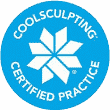Human skin and the development of moles go together — the average person has between 10 and 40 moles, most of which develop in early adulthood before the age of 30. The vast majority of these are harmless, but some, called dysplastic moles, are precursor lesions of melanoma, the most dangerous form of skin cancer. That’s why it’s important for you to keep an eye on your moles, watching for changes.
At Georgia Dermatology Partners, our board-certified dermatologists remove moles, mostly for cosmetic reasons, but also when the moles are dysplastic. Call 770.972.4845 today to schedule your mole treatment consultation at one of our four offices in Georgia!
What causes moles?
Moles develop when melanocyte cells (responsible for skin color) grow in clusters rather than being spread across the skin. Moles can grow anywhere on the skin and are usually brown or black. Thanks to their relationship with skin pigment, some moles darken with sun exposure, during the hormonal teenage years, and during pregnancy. Over time they change. Some develop hairs, others will become more raised, and others may change color.
Most moles are harmless, but when a mole changes color, height, size, or shape, that’s when we need to see you in one of our four Atlanta offices.
What are the signs I need to watch for with moles?
Although most moles are benign, occasionally they can be a precursor to melanoma, the most dangerous form of skin cancer. If a person has over 50 moles, he or she is at a greater risk for developing melanoma. We like our Georgia Dermatology Partners patients to know what to watch for with their moles, so if your mole exhibits these signs, please call us.
Watch if the mole:
- Is larger than six millimeters
- Itches and bleeds
- Changes color, size, or shape
- Has multiple colors
- Is located where it can’t be easily monitored, such as on the scalp
If you have a personal or family history of abnormal moles or melanoma, we need to evaluate your moles and other lesions on a regular basis to be more proactive than with other patients.
What is a mole screening?
Mole screenings are done to check a spot or spots on your body. If you have many, we may use high-resolution photos to create a map of your moles. Mole mapping provides a way for our team to track changes on your skin if you have a large number of unusual moles or if you have a history of skin cancer.
Because this type of pro-active screening shows a history of any change in your skin over time, we can spot skin cancer, particularly melanoma, earlier. With melanoma, early detection is key to successful treatment.
How are moles removed?
Most moles don’t require any treatment. But they may be cosmetically unappealing or uncomfortable when they rub on your clothing, and you may want the mole surgically removed. Obviously, moles that are showing signs of possible melanoma need to be removed and examined.
Removing a mole takes just a few minutes. Generally, our Georgia Dermatology Partners board-certified dermatologists remove moles in three ways:
- Excision — Some moles can be shaved off with a blade. Other moles with cells under the skin will require a deeper incision to remove the entire mole and prevent it from returning. This may require a couple stitches to close.
- Freezing — Liquid nitrogen can be sprayed or swabbed onto the mole. This freezes the mole’s cells and they die. The mole will peel off in a week or two.
- Burning — An electric current that heats a wire can be used to burn off moles. Larger moles may take more than one treatment to fully remove them.
None of these methods is difficult, but the area will be numbed with local anesthetic prior to removing the mole.
What if my mole turns out to be cancerous?
Once we remove your suspicious mole, we give it to Dr. Jessica Mercer, our board-certified dermatopathologist, who runs our in-house full-service dematopathology lab at Georgia Dermatology Partners. Dr. Mercer then screens the tissue looking for cancerous cells.
If she finds those cells, the next step is to check the outer borders of the tissue sample. Dr. Mercer checks the entire outer ring looking for other cancer cells. If the outer ring is clear, that means we removed all the cancer with our excision.
If, however, she finds more cells on the outer ring, that is a sign we did not get all of the cancer. We will contact you and schedule another procedure to remove more tissue. If it is basal or squamous cell carcinoma, we will likely use Mohs methods for the next procedure to minimize tissue loss and maximize successful removal of all the cancer.
Is there recovery after mole removal?
Mole removal, whatever method is used, is a simple outpatient procedure. If the mole is cut out, there may be a couple stitches. Otherwise, freezing and burning will require little more than a bandage to cover the mole until it peels off. A small blister can develop around the mole when liquid nitrogen is used. Unless the mole is in a spot where it is touched or rubbed, there really isn’t any recovery with their removal.
Will mole removal leave a scar?
In most cases, the small size of moles doesn’t create any scar after their removal. There may be a small white patch afterwards, but it isn’t highly noticeable.
What Are the Causes of Skin Cancer?
The vast majority of skin cancers are caused by exposure to ultraviolet light. The primary culprit is the sun, though people who use tanning beds or lamps are also exposing their skin to harmful UV light. Ultraviolet light permeates the upper layers of the skin and can damage the DNA that drives new skin cell growth. As a result of damaged DNA, skin cells begin to grow and divide in abnormal patterns.
What Are My Treatment Options if Skin Cancer is Found in a Mole?
If your doctor discovers cancer cells in a mole (usually via skin biopsy), they will discuss treatment options based on the location and severity of the disease. More conservative treatments may include topical medication that destroys cancer cells. The abnormal cells may also be destroyed through freezing. This is called cryotherapy. Finally, it may be most advantageous to remove the mole and a small amount of surrounding tissue using minimally-invasive excision. Every case is unique and carefully planned around personal needs and preferences.
How Do I Examine Myself for Skin Cancer?
Many studies have indicated that early skin cancer detection and treatment leads to better outcomes. To spot skin cancer early, you must be very familiar with your skin. You gain this familiarity by examining your skin monthly. Your monthly skin cancer self-exams involve looking at every inch of the skin on your body, including your scalp. It's convenient to perform these exams before or after a shower. You can observe much of your skin easily but will need to use a handheld mirror to see your back, the back of your neck, and your genital area (yes, you can get skin cancer there, too). It may be easiest to start at one end of your body and gradually work your way up or down.
How Often Should I Have a Skin Check from a Dermatologist?
It is wise to schedule a formal skin cancer screening with your dermatologist every year. During these visits, your doctor may use a special lighted instrument to examine spots and more accurately identify any abnormalities in color, texture, shape, or other characteristics. These annual skin checks can also provide an opportunity for you to learn how to improve the effectiveness of the self-exams you perform on a monthly basis.
How Do I Best Protect Myself from the Sun?
To protect your skin and reduce your risk of developing skin cancer, wear sunscreen every day. Many studies show that people do wear sunscreen. However, those same studies show that they're doing it wrong. You are best protected by broad-spectrum sunscreen with an SPF of at least 30. Higher SPF products filter out only slightly more sunlight so it isn't necessary to spend more money for higher SPF. What is essential is to apply a liberal amount of product to your skin. Experts recommend using one ounce of sunscreen for the body and one-third to one-half a teaspoon for the face and neck. Most people do not apply nearly that much. Then, if you're outdoors for more than a few hours, you must reapply your sunscreen periodically to maintain adequate protection. If you swim or sweat, your sunscreen is diluted and needs to be reapplied.
In addition to using sunscreen properly, you can protect your skin by reducing sun exposure during the peak hours of the day. Mid-day sun is bright and strong, so avoid it when possible. It can also be helpful to wear lightweight, long-sleeved shirts and pants when spending time outdoors. Keep in mind, as well, that your skin is absorbing sunlight even when you're in the car, so these tips for protection apply.
Can Skin Cancer from a Mole Spread?
Yes. Melanoma skin cancer often begins as a new, abnormal mole. This type of cancer can eventually spread, or metastasize, to other parts of your body. This is one reason it is so important to perform self-exams monthly and receive a comprehensive skin cancer screening from your dermatologist once a year. Research has shown that early detection and treatment can stop the spread of melanoma skin cancer away from its original mole.
Call Georgia Dermatology Partners Today For Mole Treatment!
Give our experienced and trusted dermatologists a call at 770.972.4845 if you are interested in learning more about our mole treatment services. You can also schedule your personalized consultation at one of our four offices by filling out the form in our contact page. We have locations in Snellville, Loganville, Braselton, and Brookhaven, GA.













